12 Best Wildlife Sanctuaries In Rajasthan, known for its majestic forts and vibrant culture, also boasts remarkable wildlife sanctuaries that offer a unique glimpse into the region’s diverse ecosystems. The Sariska Tiger Reserve, nestled in the Aravalli Range, is home to Bengal tigers and a variety of fauna. Ranthambore National Park, another renowned destination, is celebrated for its thriving tiger population.
Keoladeo National Park, a UNESCO World Heritage Site, attracts bird enthusiasts with its rich avian diversity. Desert National Park, near Jaisalmer, showcases the arid landscape and its inhabitants, including the elusive Great Indian Bustard. Kumbhalgarh Wildlife Sanctuary, flanked by the historic Kumbhalgarh Fort, shelters various species.
Other notable sanctuaries include Mount Abu Wildlife Sanctuary, Tal Chhapar Sanctuary, Sita Mata Wildlife Sanctuary, and Darrah National Park. These sanctuaries collectively harbor a diverse array of flora and fauna, providing nature enthusiasts and wildlife lovers with an unforgettable experience amidst Rajasthan’s captivating landscapes Wildlife in Rajasthan.
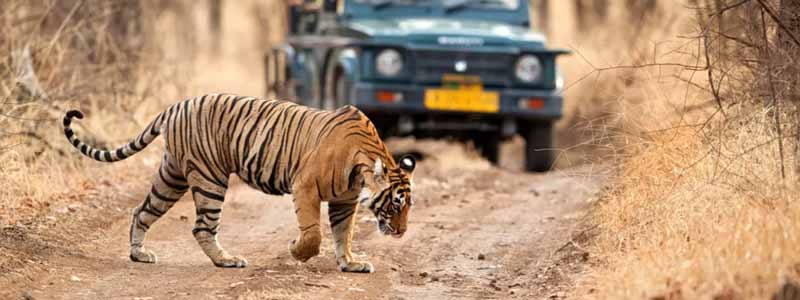
Ranthambhore National Park:
Ranthambore National Park is one of the most renowned wildlife sanctuaries in India, located in the Sawai Madhopur district of southeastern Rajasthan. Covering an area of approximately 392 square kilometers, it is primarily known for its thriving population of Bengal tigers. The park is characterized by its diverse terrain, including grasslands, dry deciduous forests, and rocky hills, providing a suitable habitat for a variety of wildlife species.
Apart from tigers, Ranthambore is also home to other predators like leopards, striped hyenas, and sloth bears. Additionally, it hosts a rich diversity of flora and fauna, including over 300 species of birds, making it a paradise for birdwatchers.
Ranthambore National Park is not only renowned for its wildlife but also for its historical significance, with the majestic Ranthambore Fort towering over the landscape. This UNESCO World Heritage Site adds to the park’s allure, attracting history enthusiasts and nature lovers alike.
Visitors to Ranthambore can enjoy safari experiences, both on jeep and canter vehicles, offering an opportunity to witness the park’s wildlife in their natural habitat. The park is open to visitors from October to June, with the peak season for tiger sightings being from November to April.
Overall, Ranthambore National Park is a must-visit destination for wildlife enthusiasts seeking an unforgettable safari experience amidst the natural beauty and historical charm of Rajasthan.
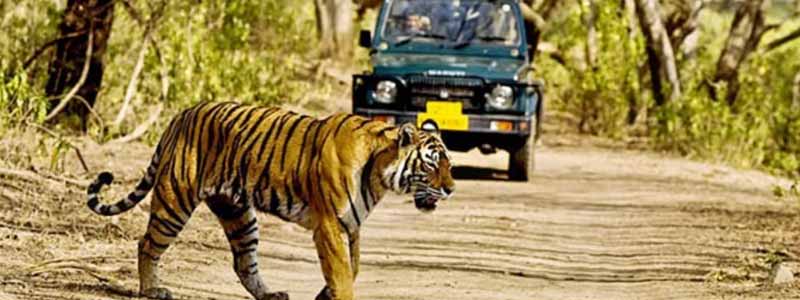
Sariska Tiger Reserve:
Sariska Tiger Reserve is a prominent wildlife sanctuary located in the Alwar district of Rajasthan, India. Established in 1955 as a wildlife sanctuary, it was later declared a tiger reserve in 1978, primarily aimed at conserving the population of Bengal tigers. Covering an area of around 866 square kilometers, Sariska Tiger Reserve is characterized by its diverse landscape, including dry deciduous forests, rocky hills, and grasslands.
Apart from Bengal tigers, Sariska is home to a variety of wildlife species, including leopards, jungle cats, striped hyenas, sambar deer, nilgai, and numerous bird species. The sanctuary’s avian diversity is particularly noteworthy, making it a popular destination for birdwatchers.
Sariska Tiger Reserve also holds historical significance, with landmarks such as the 10th-century Kankwari Fort and the ancient Neelkanth temples adding to its cultural appeal.
Visitors to Sariska can explore the sanctuary through safari experiences, including jeep safaris and canter rides, offering opportunities to spot wildlife amidst the natural beauty of the reserve. The best time to visit Sariska Tiger Reserve is from October to June, with the winter months (November to February) being particularly pleasant for wildlife sightings.
In recent years, Sariska Tiger Reserve has been involved in conservation efforts aimed at restoring and maintaining the tiger population within the sanctuary, making it a significant contributor to tiger conservation in India.
Overall, Sariska Tiger Reserve stands as a testament to Rajasthan’s commitment to wildlife conservation and offers visitors a chance to experience the region’s natural and cultural heritage in a stunning wilderness setting Rajasthan Wildlife Tour Packages.
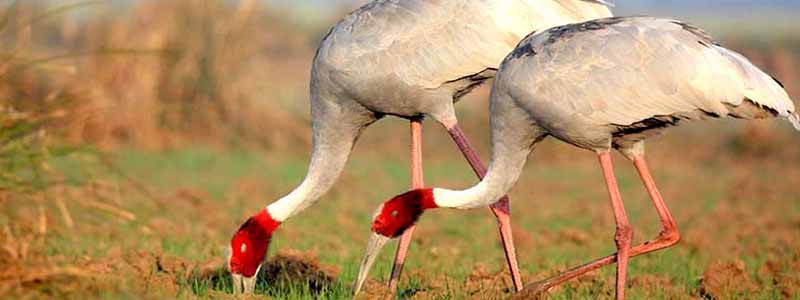
Keoladeo National Park (Bharatpur Bird Sanctuary):
Keoladeo National Park, also known as Bharatpur Bird Sanctuary, is a UNESCO World Heritage Site located in Bharatpur, Rajasthan, India. Spanning an area of around 29 square kilometers, the park is renowned for its rich avian diversity, particularly during the winter migratory season.
Established in 1982, Keoladeo National Park was originally a hunting ground for the maharajas of Bharatpur but was later declared a protected area to conserve its unique ecosystem. The park is characterized by its marshes, grasslands, woodlands, and shallow lakes, providing a diverse habitat for a wide variety of bird species.
Keoladeo National Park is famous for hosting thousands of migratory birds, including rare and endangered species, from regions as far as Siberia, Central Asia, and Europe. Some of the notable bird species found in the park include the Siberian crane, greater flamingo, sarus crane, painted stork, and several species of ducks, geese, and waders.
Apart from its avian inhabitants, Keoladeo National Park also supports a rich diversity of flora and fauna, including various species of mammals, reptiles, and amphibians.
Visitors to the park can explore its diverse habitats through guided walks, cycle rickshaw rides, or boat tours, offering excellent opportunities for birdwatching and wildlife photography. The best time to visit Keoladeo National Park is during the winter months, from October to March, when the migratory birds arrive in large numbers.
Keoladeo National Park serves as a vital habitat for migratory birds and plays a crucial role in their conservation, making it a must-visit destination for nature enthusiasts and bird lovers seeking an immersive wildlife experience in Rajasthan.
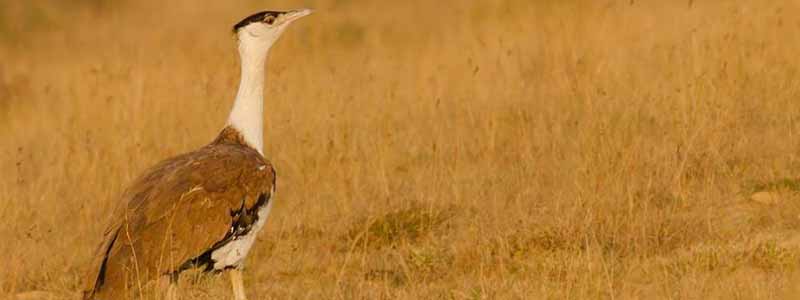
Desert National Park:
Desert National Park is a prominent wildlife sanctuary located near the town of Jaisalmer in the Indian state of Rajasthan. Covering an area of approximately 3,162 square kilometers, it is one of the largest national parks in India and is renowned for its unique desert ecosystem.
Established in 1980, Desert National Park is primarily characterized by its vast stretches of sand dunes, rocky terrain, and thorny scrub vegetation. The park’s landscape is typical of the Thar Desert region, with arid conditions and extreme temperatures.
Despite its harsh environment, Desert National Park supports a surprising variety of wildlife adapted to desert life. Some of the notable species found in the park include the endangered Great Indian Bustard, Indian gazelle (chinkara), desert fox, desert cat, blackbuck, and numerous species of reptiles and birds.
One of the park’s main attractions is its avian diversity, particularly during the winter months when migratory birds arrive from different parts of the world. Birdwatchers can spot species such as the houbara bustard, demoiselle crane, eagles, vultures, and various desert-adapted birds.
Visitors to Desert National Park can explore the desert landscape through guided jeep safaris, camel safaris, or trekking expeditions, offering an opportunity to witness the park’s wildlife and experience the unique desert environment.
The best time to visit Desert National Park is during the winter months, from November to March, when the weather is relatively cooler and migratory birds flock to the region.
Desert National Park is not only a sanctuary for wildlife but also a cultural and historical treasure, with ancient settlements, temples, and remnants of human habitation dating back to prehistoric times scattered across the desert landscape.
Overall, Desert National Park offers visitors a chance to immerse themselves in the rugged beauty of the Thar Desert and discover the fascinating flora, fauna, and cultural heritage of Rajasthan’s desert region.
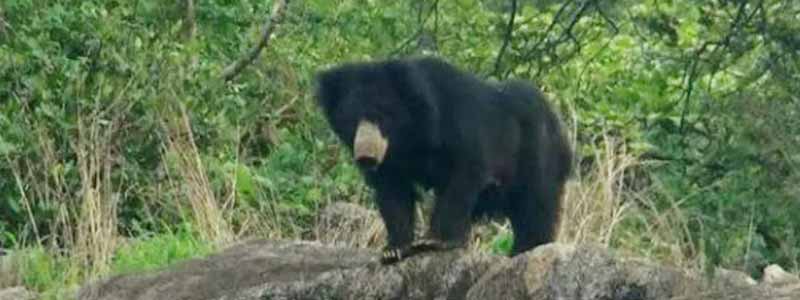
Mount Abu Wildlife Sanctuary:
Mount Abu Wildlife Sanctuary is situated in the Aravalli Range in the Sirohi district of Rajasthan, India. Spanning over 288 square kilometers, it is one of the oldest parts of the Aravalli Range and offers a unique blend of diverse flora and fauna amidst its rugged terrain.
Established in 1960, Mount Abu Wildlife Sanctuary is known for its rich biodiversity and lush greenery, which contrasts with the arid landscapes typically associated with Rajasthan. The sanctuary is characterized by its mixed forests, consisting of evergreen trees, bamboo groves, and flowering shrubs.
The sanctuary is home to a variety of wildlife species, including leopards, jungle cats, Indian civets, sloth bears, and langurs. It is also known for its avian diversity, with over 250 species of birds, including the grey junglefowl, Indian peafowl, and various migratory birds, making it a haven for birdwatchers.
Visitors to Mount Abu Wildlife Sanctuary can explore its diverse habitats through guided nature walks, trekking trails, and jeep safaris, offering opportunities to spot wildlife amidst the serene natural surroundings. The sanctuary also boasts several viewpoints that provide panoramic views of the surrounding landscape.
Apart from its natural attractions, Mount Abu Wildlife Sanctuary is also home to several religious and historical sites, including the ancient Gaumukh Temple and the famous Dilwara Jain Temples, adding to its cultural significance.
The best time to visit Mount Abu Wildlife Sanctuary is from October to March, when the weather is pleasant, and wildlife sightings are more common.
Overall, Mount Abu Wildlife Sanctuary offers visitors a tranquil retreat amidst nature, with its diverse flora, fauna, and cultural heritage making it a must-visit destination in Rajasthan for nature lovers and wildlife enthusiasts.
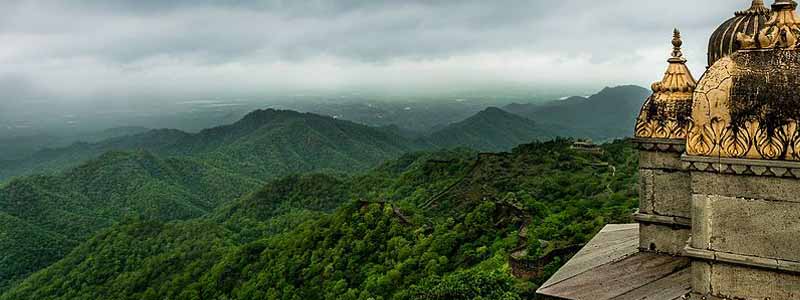
Kumbhalgarh Wildlife Sanctuary:
Kumbhalgarh Wildlife Sanctuary is located in the Rajsamand district of Rajasthan, India, near the famous Kumbhalgarh Fort. Covering an area of approximately 578 square kilometers, it is a significant wildlife reserve in the Aravalli Range and is known for its diverse flora and fauna.
Established in 1971, Kumbhalgarh Wildlife Sanctuary is characterized by its rugged terrain, dry deciduous forests, and hilly landscapes. The sanctuary is named after the iconic Kumbhalgarh Fort, which stands majestically within its boundaries and is a UNESCO World Heritage Site.
The sanctuary is home to a variety of wildlife species, including leopards, sloth bears, jungle cats, hyenas, wolves, and antelopes like chinkara and nilgai. It is also known for its avian diversity, with over 200 species of birds, including the Indian grey hornbill, parakeets, peafowl, and various migratory birds during the winter months.
Visitors to Kumbhalgarh Wildlife Sanctuary can explore its natural beauty through jeep safaris, trekking trails, and guided nature walks, offering opportunities to spot wildlife and experience the serene surroundings of the Aravalli hills.
Apart from its wildlife attractions, the sanctuary also houses several historical and cultural sites, including ancient temples, ruins, and water bodies, adding to its charm and cultural significance.
The best time to visit Kumbhalgarh Wildlife Sanctuary is from October to March when the weather is pleasant, and wildlife sightings are more common.
Overall, Kumbhalgarh Wildlife Sanctuary offers visitors a chance to immerse themselves in the natural beauty of Rajasthan’s Aravalli Range while experiencing its rich biodiversity and cultural heritage.
Jaisamand Sanctuary:
Jaisamand Wildlife Sanctuary, also known as Jaisamand Lake Sanctuary, is situated near Udaipur in the Indian state of Rajasthan. It is spread around the picturesque Jaisamand Lake, which is one of the largest artificial lakes in Asia, covering an area of approximately 52 square kilometers.
Established in 1957, Jaisamand Wildlife Sanctuary is renowned for its scenic beauty and diverse flora and fauna. The sanctuary is characterized by its lush forests, rocky hills, and the pristine waters of Jaisamand Lake, creating a serene and tranquil environment.
The sanctuary is home to a variety of wildlife species, including leopards, jungle cats, sloth bears, sambar deer, chital, and various species of reptiles and birds. It is particularly known for its avian diversity, with over 200 species of birds, including migratory birds that visit the lake during the winter months.
Visitors to Jaisamand Wildlife Sanctuary can enjoy boat rides on the lake, offering opportunities to spot birds and enjoy the scenic surroundings. Additionally, the sanctuary offers trekking trails and nature walks, allowing visitors to explore its diverse habitats and wildlife.
Apart from its wildlife attractions, Jaisamand Wildlife Sanctuary is also home to historical and cultural landmarks, including the beautiful marble pavilions and cenotaphs built by the Maharana of Udaipur on the lake’s islands, adding to its cultural significance.
The best time to visit Jaisamand Wildlife Sanctuary is from October to March when the weather is pleasant, and wildlife sightings are more common.
Overall, Jaisamand Wildlife Sanctuary offers visitors a peaceful retreat amidst nature, with its scenic beauty, diverse wildlife, and cultural heritage making it a popular destination for nature lovers and wildlife enthusiasts in Rajasthan.
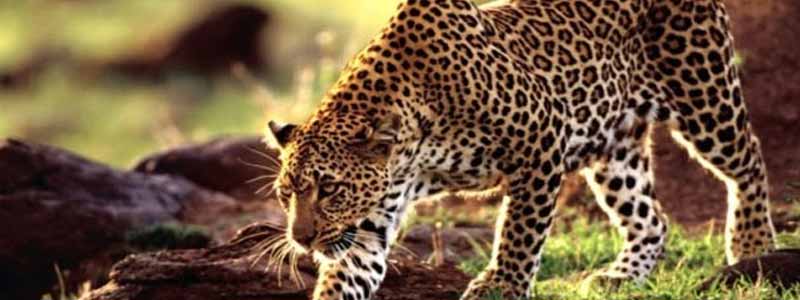
Darrah Wildlife Sanctuary:
Darrah Wildlife Sanctuary is located in the Kota district of Rajasthan, India. Established in 2004, this sanctuary covers an area of approximately 250 square kilometers and is part of the larger Darrah Forest Reserve.
Darrah Wildlife Sanctuary is known for its rugged terrain, consisting of rocky hills, dense forests, and seasonal streams. It is characterized by its dry deciduous vegetation, dominated by trees like dhok, tendu, and bamboo.
The sanctuary is home to a variety of wildlife species, including leopards, hyenas, wolves, jungle cats, sloth bears, chinkaras, and numerous species of birds. It is particularly known for its population of Indian wolves, which are often spotted roaming in the sanctuary.
Visitors to Darrah Wildlife Sanctuary can explore its diverse habitats through jeep safaris and guided nature walks, offering opportunities to spot wildlife and enjoy the scenic beauty of the surroundings. The sanctuary also offers camping facilities for visitors interested in overnight stays amidst nature.
Apart from its wildlife attractions, Darrah Wildlife Sanctuary is also home to historical and cultural sites, including ancient temples, ruins, and forts scattered throughout the sanctuary, adding to its cultural significance.
The best time to visit Darrah Wildlife Sanctuary is from October to March when the weather is pleasant, and wildlife sightings are more common.
Overall, Darrah Wildlife Sanctuary offers visitors a chance to immerse themselves in the natural beauty of Rajasthan’s wilderness while experiencing its rich biodiversity and cultural heritage.
Jawahar Sagar Sanctuary:
Jawahar Sagar Wildlife Sanctuary is situated in the Kota district of Rajasthan, India. Established in 1976, this sanctuary spans an area of approximately 98 square kilometers along the banks of the Chambal River.
Jawahar Sagar Wildlife Sanctuary is known for its diverse ecosystem, which includes dry deciduous forests, riverine vegetation, and rocky terrain. The sanctuary is characterized by its picturesque landscape, with the Chambal River flowing through its heart, creating a habitat rich in biodiversity.
The sanctuary is home to a variety of wildlife species, including leopards, sloth bears, jungle cats, chinkaras, and numerous species of birds. It is particularly known for its avian diversity, with over 200 species of birds, including migratory birds that visit the sanctuary during the winter months.
Visitors to Jawahar Sagar Wildlife Sanctuary can explore its scenic beauty through boat rides on the Chambal River, offering opportunities to spot crocodiles, turtles, and a variety of bird species along the riverbanks. The sanctuary also offers jeep safaris and guided nature walks, allowing visitors to explore its diverse habitats and wildlife.
Apart from its wildlife attractions, Jawahar Sagar Wildlife Sanctuary is also known for its historical and cultural significance, with ancient temples and ruins scattered throughout the sanctuary, adding to its cultural heritage.
The best time to visit Jawahar Sagar Wildlife Sanctuary is from October to March when the weather is pleasant, and wildlife sightings are more common.
Overall, Jawahar Sagar Wildlife Sanctuary offers visitors a peaceful retreat amidst nature, with its scenic beauty, diverse wildlife, and cultural heritage making it a popular destination for nature lovers and wildlife enthusiasts in Rajasthan.
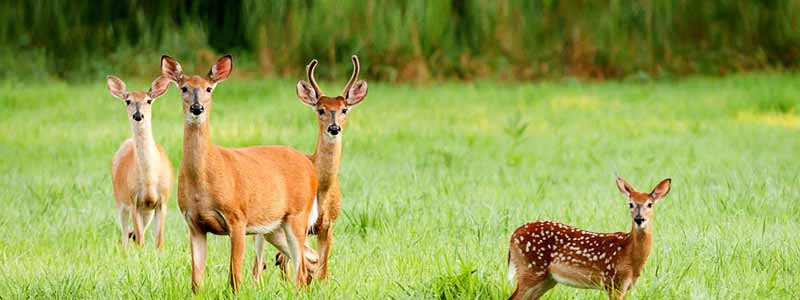
Kailadevi Wildlife Sanctuary:
Kailadevi Wildlife Sanctuary is located in the Karauli district of Rajasthan, India. Established in 1983, this sanctuary spans an area of approximately 673 square kilometers and is named after the revered Kaila Devi Temple situated within its boundaries.
The sanctuary is characterized by its diverse ecosystem, which includes dry deciduous forests, grasslands, and rocky terrain. It is home to a variety of wildlife species, including leopards, sloth bears, wild boars, hyenas, and chinkaras. The sanctuary is particularly known for its population of Indian wolves and striped hyenas.
Kailadevi Wildlife Sanctuary is also a haven for birdwatchers, with over 200 species of birds recorded in the area, including migratory birds that visit the sanctuary during the winter months. Some of the notable bird species found in the sanctuary include the Indian eagle-owl, Indian roller, and painted stork.
Visitors to Kailadevi Wildlife Sanctuary can explore its diverse habitats through jeep safaris, guided nature walks, and birdwatching excursions, offering opportunities to spot wildlife and enjoy the scenic beauty of the surroundings. The sanctuary also offers camping facilities for visitors interested in overnight stays amidst nature.
Apart from its wildlife attractions, Kailadevi Wildlife Sanctuary is also known for its cultural significance, with the Kaila Devi Temple being a popular pilgrimage site for devotees, especially during the Navratri festival.
The best time to visit Kailadevi Wildlife Sanctuary is from October to March when the weather is pleasant, and wildlife sightings are more common.
Overall, Kailadevi Wildlife Sanctuary offers visitors a chance to immerse themselves in the natural beauty of Rajasthan’s wilderness while experiencing its rich biodiversity and cultural heritage.
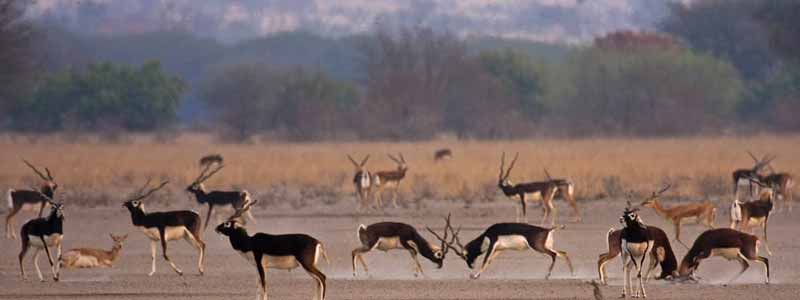
Tal Chhapar Sanctuary:
Tal Chhapar Sanctuary, also known as Tal Chhapar Blackbuck Sanctuary, is located in the Churu district of Rajasthan, India. Established in 1966, this sanctuary covers an area of approximately 7 square kilometers and is known for its population of blackbucks.
The sanctuary is characterized by its flat grassland plains interspersed with scattered acacia trees. It provides a suitable habitat for the blackbuck, which is the flagship species of the sanctuary. Tal Chhapar Sanctuary is home to one of the largest populations of blackbucks in India, making it a significant conservation area for this species.
Apart from blackbucks, the sanctuary also supports a variety of wildlife, including nilgai, desert foxes, and various species of birds. It is particularly known for its avian diversity, with over 140 species of birds recorded in the area, including raptors like the Eastern Imperial Eagle and short-toed snake eagle.
Visitors to Tal Chhapar Sanctuary can explore its grassland plains through guided nature walks and jeep safaris, offering opportunities to spot blackbucks and other wildlife species. The sanctuary also provides birdwatching opportunities, especially during the winter months when migratory birds visit the area.
The best time to visit Tal Chhapar Sanctuary is from October to March when the weather is pleasant, and wildlife sightings are more common.
Overall, Tal Chhapar Sanctuary offers visitors a chance to experience the unique grassland ecosystem of Rajasthan while observing the graceful blackbucks and diverse birdlife that inhabit the area.
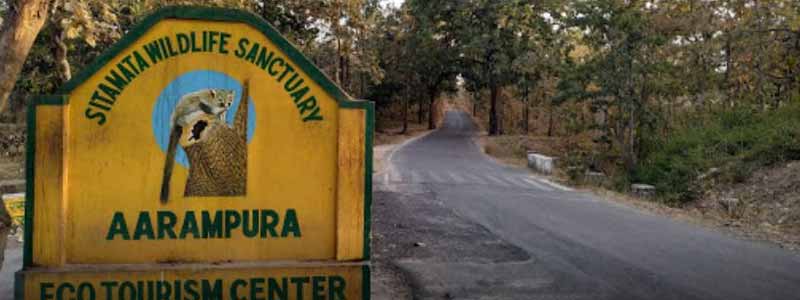
Sitamata Wildlife Sanctuary:
Sitamata Wildlife Sanctuary is situated in the southern part of Rajasthan, near the borders of Gujarat and Madhya Pradesh. Covering an area of approximately 423 square kilometers, this sanctuary is known for its rich biodiversity and scenic beauty.
Established in 1979, Sitamata Wildlife Sanctuary is named after the legendary Hindu figure, Sita Mata, wife of Lord Rama, who is believed to have taken refuge in this area during her exile. The sanctuary is characterized by its diverse terrain, including dry deciduous forests, rocky hills, and river valleys.
The sanctuary is home to a variety of wildlife species, including leopards, jungle cats, sloth bears, Indian civets, Indian pangolins, and various species of deer, including the rare four-horned antelope. It is also known for its avian diversity, with over 250 species of birds recorded in the area, including migratory birds that visit the sanctuary during the winter months.
Visitors to Sitamata Wildlife Sanctuary can explore its diverse habitats through jeep safaris, guided nature walks, and trekking trails, offering opportunities to spot wildlife and enjoy the scenic beauty of the surroundings. The sanctuary also offers camping facilities for visitors interested in overnight stays amidst nature.
Apart from its wildlife attractions, Sitamata Wildlife Sanctuary is also known for its cultural significance, with several temples and religious sites located within its boundaries, including the ancient Sita Mata Temple, which is visited by pilgrims throughout the year.
The best time to visit Sitamata Wildlife Sanctuary is from October to March when the weather is pleasant, and wildlife sightings are more common.
Overall, Sitamata Wildlife Sanctuary offers visitors a chance to immerse themselves in the natural beauty of Rajasthan’s wilderness while experiencing its rich biodiversity and cultural heritage.








